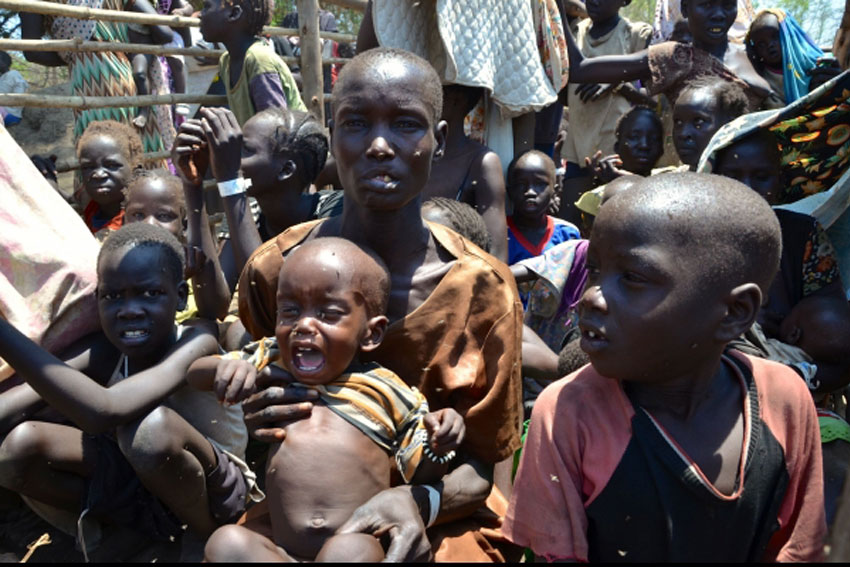Ethiopia faces wave of refugees from South Sudan, warns UN relief official
 Nyaman Joak, 35, with 16-month-old Boum at Ethiopia’s Pagak entry point, waiting to be registered as a refugee. It took 10 days for Joak to walk here from her home in South Sudan’s Upper Nile state. Three of her children died in the fighting, and she doesn’t know where her husband is. Photo: WFP/Lisa Bryant
Nyaman Joak, 35, with 16-month-old Boum at Ethiopia’s Pagak entry point, waiting to be registered as a refugee. It took 10 days for Joak to walk here from her home in South Sudan’s Upper Nile state. Three of her children died in the fighting, and she doesn’t know where her husband is. Photo: WFP/Lisa Bryant
John Ging, Operations Director for the UN Office for the Coordination of Humanitarian Affairs (OCHA), just back from Ethiopia, told a news conference at UN Headquarters today: “This is a manmade problem – the result of a political disagreement between two powerful individuals. It is tragic to see this happening in the world’s youngest country, whose independence we were so recently celebrating.”
“It is imperative that parties to the conflict, and those with influence over them, find a peaceful political solution urgently,” Mr. Ging said. “The people of South Sudan must not be treated as expendable pawns in this power struggle.”
An estimated 180,000 refugees have arrived in Ethiopia from South Sudan since the violence erupted in late 2013 with numbers set to reach 300,000-350,000 by the end of this year.
He said that in addition to the more than 400,000 refugees who have fled their homeland for neighbouring countries, including Ethiopia, the “desperate situation” in South Sudan has forced 1.1 million people to leave their homes inside the country and 3.8 million victims of the war inside South Sudan require humanitarian aid.
Mr. Ging said 90 per cent of those arriving in Ethiopia are women and children and 70 per cent are under the age of 18. People are arriving in a dire state, with some 30 per cent of new arrivals under the age of five acutely malnourished, and 10 per cent severely acutely malnourished, meaning that without urgent treatment they are likely to die of starvation.
“I applaud the generosity of the people and Government of Ethiopia, who are now hosting almost 600,000 refugees” from neighbouring countries South Sudan, Sudan, Somalia and Eritrea.
“Despite not being a rich country, they have consistently kept their borders open, and are an example of international standard for the treatment of refugees in practice. It is now the international community’s turn to step up and shoulder its responsibilities to share the burden with Ethiopia.” So far, of the 193 Member States of the United Nations, only 18 are funding the appeal.
The $211 million South Sudanese refugee appeal for Ethiopia is just 25 per cent funded, which means that across the board delivery of service does not meet what the refugees are entitled.
“Only 5 per cent of school-age children in Gambella have access to education, which sets us up for huge problems down the road, and in the camp I visited only 20 per cent of people had shelter which meets international humanitarian standards,” noted Mr. Ging.
“Camps are overcrowded and, with the onset of the rainy season, the danger of a disease epidemic is very real,” he said. “Urgent funding is needed to ensure that those fleeing violence in South Sudan can live decently, healthily and with dignity.”
With the prospects of famine on the horizon in South Sudan, and no prospect for an end to the conflict, humanitarians must prepare for the worst in South Sudan and neighbouring countries.
The veteran humanitarian official described South Sudan as one of three “mega” crises in the world today on a trajectory to becoming a real catastrophe. The two other “mega” humanitarian crises today are Syria and the Central African Republic.


